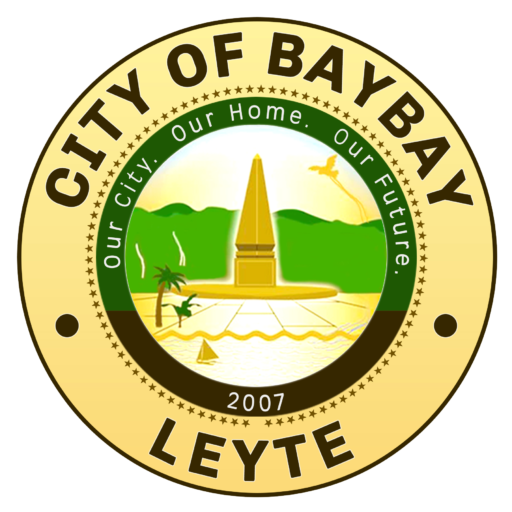City Profile
GEOGRAPHY
For industries requiring a private port facility, the measured draft of most of its shoreline is 14 meters at the distance of less than 50 meters at low tide. Its sea front is calm considering it is bounded by the Camotes Group of Islands and Cebu.
| AREA |
| 46,050 hectares |
| NUMBER OF VILLAGES/BARANGAYS |
| 23 Zones classified as urban area |
| 69 barangays classified as rural area |
| TOPOGRAPHY |
| Generally mountainous on the eastern portion with virgin forest area, and shapes down west towards the shoreline. |
| POPULATION |
| Total population as of 2021: 125,347 |
| (Female: 61,179 Male: 64,168) |
CITYHOOD
On June 16, 2007, Baybay becomes a city in the province of Leyte after ratification of Republic Act 9389.
The Supreme Court declared the cityhood law of Baybay and 15 other cities unconstitutional after a petition filed by the League of Cities of the Philippines in its ruling on November 18, 2008. On December 22, 2009, the cityhood law of Baybay and 15 other municipalities regain its status as cities again after the court reversed its ruling on November 18, 2008. On August 23, 2010, the court reinstated its ruling on November 18, 2008, causing Baybay and 15 cities to become regular municipalities. Finally, on February 15, 2011, Baybay becomes a city again including the 15 municipalities declaring that the conversion to cityhood met all legal requirements.
After six years of legal battle, in its board resolution, the League of Cities of the Philippines acknowledged and recognized the cityhood of Baybay and 15 other cities.
ETYMOLOGY
One day when some natives of ancient Baybay were gathering shells and fishing at the beach near the mouth of Sta. Cruz river, a boatload of Spanish conquistadores arrived on its shores. Evidently looking for the bigger settlement. Not knowing the name of the place, one Spanish conquistador asked one native the name of the place. Not being able to understand Spanish, the native thinking he was asked about the Sta. Cruz river replied in the local dialect: “Ang Suba Kaynunuk nagbaybay sa Sta. Kudos”. Translated as “The river is meandering through the village of Sta. Cruz”. The Spanish conquistador not being able to understand the dialect thought that the name of the place was Baybay. This how Baybay got its name.

